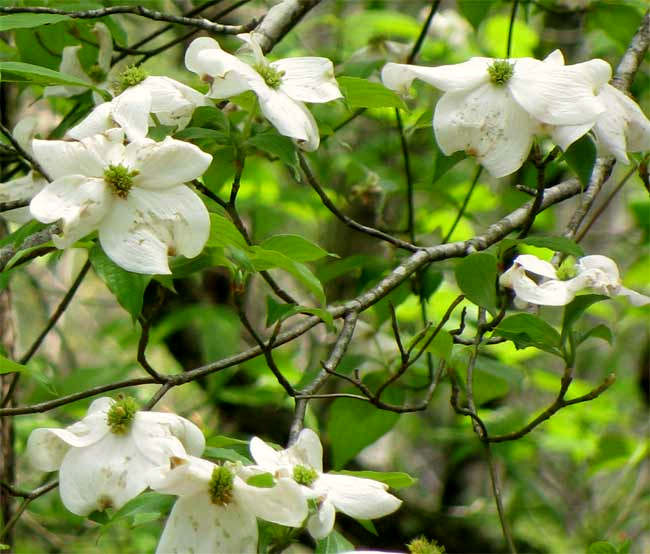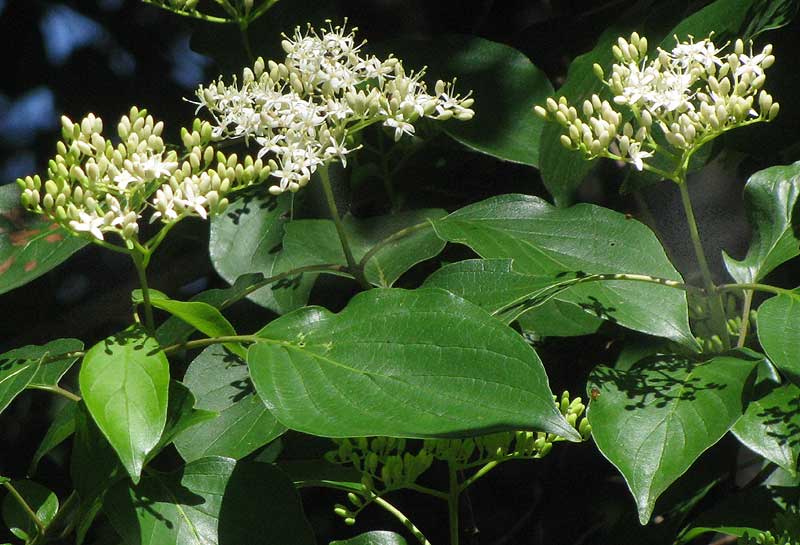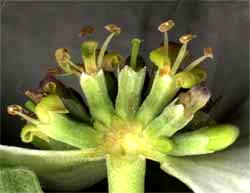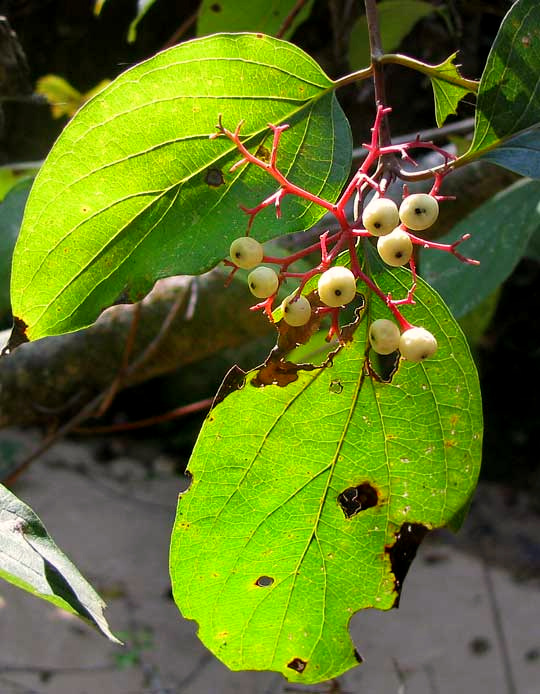 Most North Americans are familiar with blossoms of the Flowering Dogwood, Cornus florida, pictured at the right. However, about 60 wild dogwood species, genus Cornus, are recognized worldwide, with 20 listed for North America.
Most North Americans are familiar with blossoms of the Flowering Dogwood, Cornus florida, pictured at the right. However, about 60 wild dogwood species, genus Cornus, are recognized worldwide, with 20 listed for North America.  Many dogwood species don't produce the four, white, petal-like items featured so handsomely in the little picture at the left.
Many dogwood species don't produce the four, white, petal-like items featured so handsomely in the little picture at the left.

For instance, at the left you see flowering branches of the Swamp Dogwood, Cornus amomum, in a swamp in southern Mississippi. That small tree has dogwood-looking leaves, and in fact everything about it is quite similar to the Flowering Dogwood -- except that it lacks the four big, white petal-like items.
The four white "petals" aren't petals at all, but rather bracts, which are leaves that have evolved over time to look like large flower petals. They do the main job of real flower petals, which is to attract pollinators. The items that people usually call dogwood flowers, then, actually are clusters of tiny "real" flowers, surrounded by four large, white bracts.

At the right you can see a Flowering Dogwood's real flowers, with the white bracts arising below them and spreading outwards. Normally each dogwood flower has four petals, four sepals, 4 stamens, and 1 pistil with an inferior ovary producing 1 seed per fruit. These terms are explained on our Standard Blossom Page.

The picture at the left shows just one dogwood flower, with the most obvious parts labeled. The whole thing, from the bottom of the ovary to the top of the stamens, is only about ¼-inch (7 mm) tall.

Flowering dogwoods produce pretty, red, drupe-type fruits. Often the slightly fleshy fruits of other species are white, as shown at the right, on the Roughleaf Dogwood, Cornus drummondii, photographed along a sandy-bottomed stream in Mississippi.